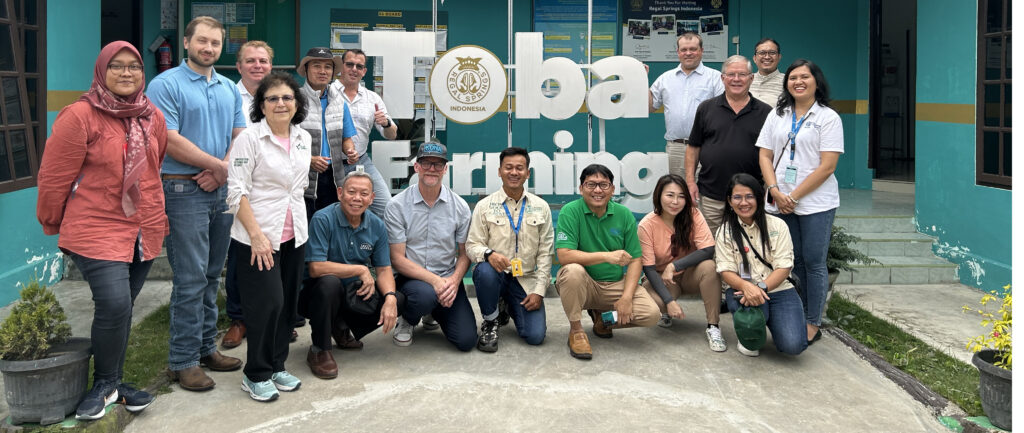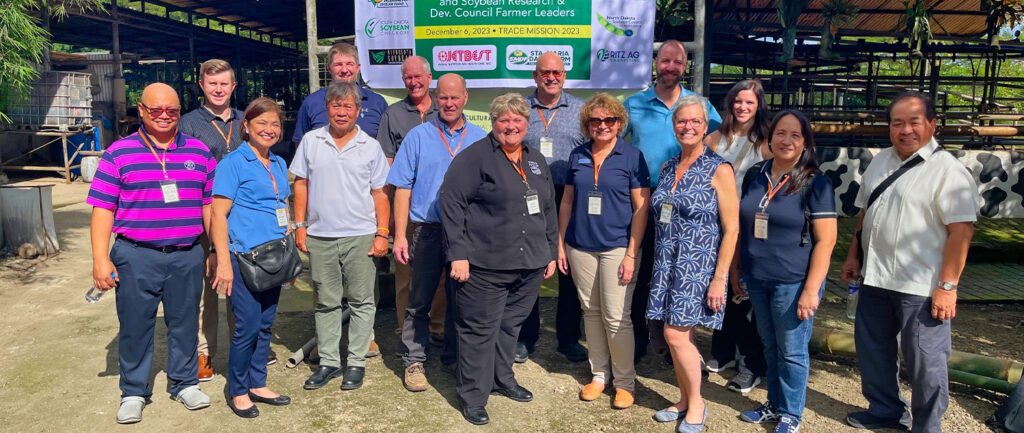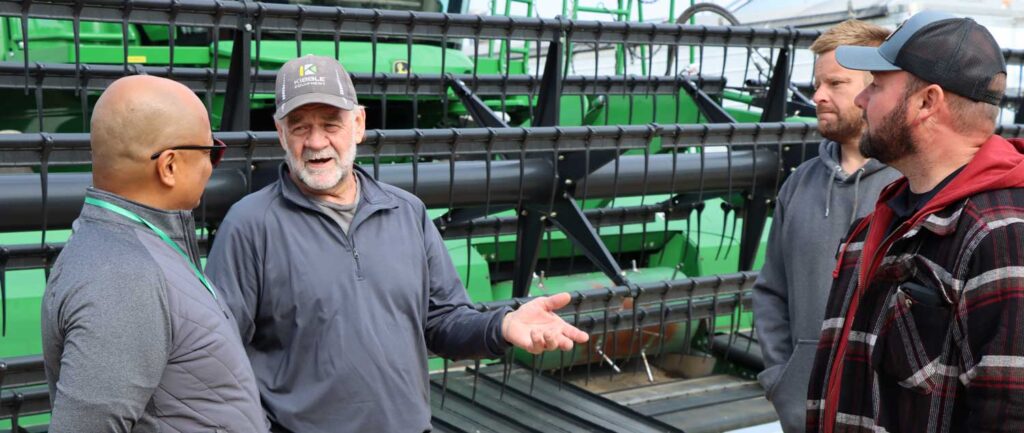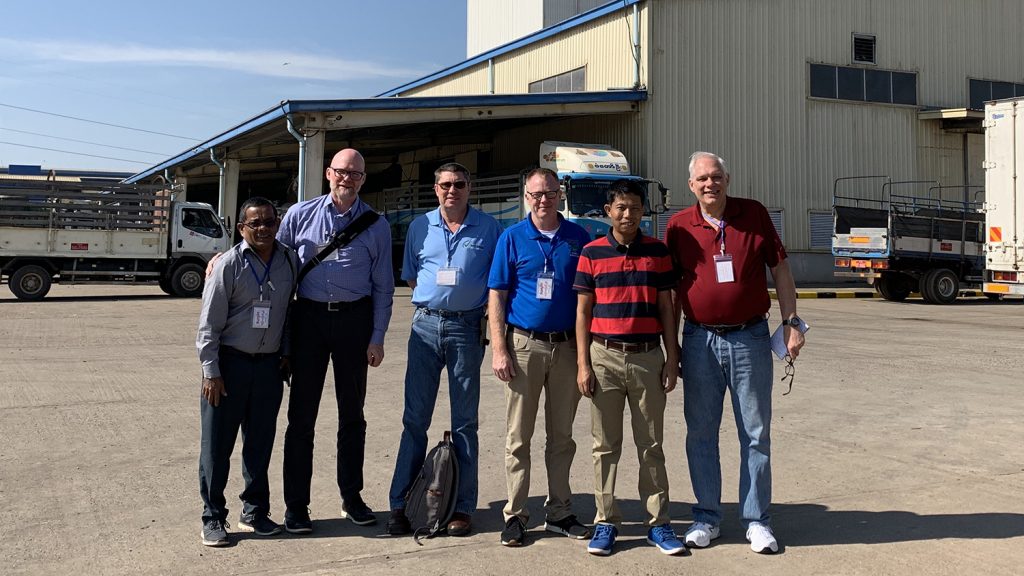The inaugural Northern Commodity Transportation Conference (NCTC) came to life this week with dozens of panelists, linking the entire ag transportation chain. Sponsored by the Minnesota Soybean Research & Promotion Council (MSR&PC), a full schedule covered all facets of commodities and transportation for the Tri-State area, bringing together leaders from across the globe, eager to work together and develop innovative solutions to increase efficiency out of the Pacific Northwest (PNW) port.
“With rapid changes occurring across the countryside, it is clear that doing things the same old way will not yield success for our farmers,” says Tom Slunecka, chief executive office for Ag Management Solutions (AMS), which oversees the Council’s operations. “This conference highlighted several new concerns and opportunities across the Tri-State area and new ways of thinking with in-depth discussion on transportation barriers.”
This two-day event, hosted by AMS in Bloomington, Minn., began with opening comments from John Baize, a renowned international agriculture trade and policy analysis, highlighting the transportation and infrastructure challenges we see today.
“We need to get our crop from here to the PNW in the most efficient manner,” says Baize, president of John C. Baize and Associates. “We have transformed into the highest costing supplier in the world, but we need to make that better to make our organizations more efficient for our export buyers.”
The NCTC continued with sessions on trade barriers, struggles, similarities and opportunities along the transportation route as commodities leave the Tri-State area and head for international waters.
Making sense of transportation difficulties
More than 100 farmers, first purchasers, commodity organizations and political officials gathered to share issues and brainstorm solutions. Panelist focusing on commodities, trade and infrastructure headlined he day, kicking off with a lesson on basis on the effect it has on transportation.
“Basis helps tell where and when the cash market wants grain by showing a weak or strong correlation,” says Dr. Frayne Olson, crop economist and marketing specialist with North Dakota State University. “It is common to think that farmers pay for transportation costs through basis, but let me tell you that buyers and sellers share these costs.”
Olson provided an example where North Dakota soybean basis was near $1.80 in September 2018, with tariff costs near $1.55 at the time, this left elevators with only 25 cents per bushel to cover operational costs. While it’s known how to move the commodity, trying to reduce those costs is the key to success.
“We need to meet our customers’ needs where they are whether we like it or not,” says Scott German, secretary for the North Dakota Corn Utilization Council. “We’re coming here to try and solve these issues and see how we can all work together. The first question we have to ask ourselves is that we all want better infrastructure, but who is going to pay for it?”
The lack of an adequate infrastructure, coupled with trade issues around the globe, leads to a higher supply prices with no place for it to go.
“The unique relationship between government agencies and commodity organizations that we have here in the U.S. is unlike anything else in the world and provides us a competitive edge,” says Scott Sindelar, chief executive officer of Edgewise Trade Advisors and retired Agricultural Minister Counselor for the Foreign Ag Service. “No one else is set up like this. With all of the trade issues going on, we need to recognize that the opportunities and tools we have are ideal and use them to our advantage.”
Ultimately, experts say, getting the crop from the farm to the terminal to the coast and eventually across the globe is where things get tricky.
“All the groups here are highly dependent on each other and are not competitors but cooperators,” says John Hausladen, president and chief executive office of the Minnesota Truckers Association. “It has to be a team effort to transport this grain and provide value for everyone in the chain.”
To end day one, participants listened to Daniel Elliott, III outline some of the recent activity from the Surface Transportation Board (STB).
Working together
Baize opened Thursday’s keynote breakfast with an outlook on the trade industry, highlighting export markets and where the U.S. ranks relative to the world.
“Minnesota and the Dakotas are dependent on PNW exports, but regardless of what China or other counties have committed, they are going to buy what’s cheapest and that will be from South America for the foreseeable future,” says Baize. “There is a lot we can have an impact on and a lot is out of our control. We can’t control our currency or freight rates, but we can control the efficiency to terminals and control the reliability and quality of our crop.”
Quality starts at the farm, but having adequate education and transportation opportunities moving from grain terminals is just as important.
“Domestically, we have a lot of opportunities. Internally, logistic are a little bit of a challenge,” says Issac Crawford, trade and portfolio manager for POET. “Building value internationally builds value for all of us.”
The past years have shown us how difficult it can be to build that value internationally with challenges in agreements and negotiations.
“The world is changing really quickly here, and we need to do what we can to change with it,” says Minnesota Department of Agriculture (MDA) Commissioner Thom Petersen. “We are bonding for our roads and bridges and I think it is good to have a mix of funding streams to help the industry.”
While we continue to focus on the opportunities for traditional grains, the future of commodities holds a lot of potential.
“The private and public partnerships are a big deal. Technology is something we can do today and needs to be supported by infrastructure and support new container links,” says Kearney Klein, vice president of Indigo Transportation. “When you do math on new economic flows, to maximize that, we have to recognize that we are in this together as a country. We are not competing between states, but across the world, and our technology can help leverage that and bring what consumers want to the market.”
Ultimately, leaders came together to learn about successes and solve transportation problems. It is all about collaboration and working together to become better.
“As we found out, there are a lot of opportunities to improve our transportation systems,” Baize says. “The truth of this conference begins now when we take what we learned and start to make a difference across the entire ag transportation chain.”
A big, bold idea turned into reality, bringing together all facets of the ag transportation industry.
“From a transportation side it is clear that South America has caught up. While transportation had been our largest advantage, that is no longer something we can rely on,” Slunecka says. “Together we must work on solutions to bring our transportation back to its former glory but also look to changes in how we view the products that we raise. The future will include more de-commoditization of our crops and greater relationships with our end users, the consumers.”







